
Honduras is a country in Central America. Honduras borders the Caribbean Sea and the North Pacific Ocean. Guatemala lies to the west, Nicaragua south east and El Salvador to the south west. Honduras is the second largest Central American republic, with a total area of 112,890 square kilometres (43,590 sq mi).

Environmental issues in Nepal include a number of issues, such as deforestation, climate change, energy and species conservation. Many of these issues have been precipitated by rapid industrialization without major environmental regulation.

There are several plausible pathways that could lead to an increased extinction risk from climate change. Every plant and animal species has evolved to exist within a certain ecological niche. But climate change leads to changes of temperature and average weather patterns. These changes can push climatic conditions outside of the species' niche, and ultimately render it extinct. Normally, species faced with changing conditions can either adapt in place through microevolution or move to another habitat with suitable conditions. However, the speed of recent climate change is very fast. Due to this rapid change, for example cold-blooded animals may struggle to find a suitable habitat within 50 km of their current location at the end of this century.

Climate change is an urgent and significant issue affecting Japan. In recent years, the country has observed notable changes in its climate patterns, with rising temperatures serving as a prominent indicator of this phenomenon. As an archipelago situated in northeastern Asia, Japan is particularly vulnerable to the impacts of climate change due to its diverse geography and exposure to various weather systems. The nation experiences a broad range of climates, spanning from the frigid winters of Hokkaido to the subtropical climates of Okinawa. Changes in temperature patterns have the potential to disrupt ecosystems, impact agricultural productivity, modify water resources, and pose significant challenges to infrastructure and human settlements.
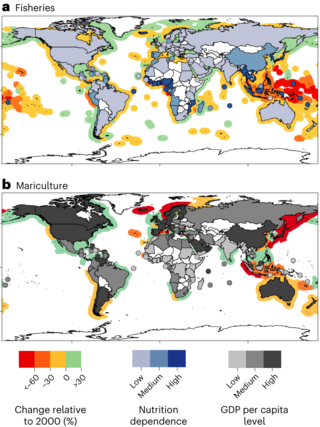
Fisheries are affected by climate change in many ways: marine aquatic ecosystems are being affected by rising ocean temperatures, ocean acidification and ocean deoxygenation, while freshwater ecosystems are being impacted by changes in water temperature, water flow, and fish habitat loss. These effects vary in the context of each fishery. Climate change is modifying fish distributions and the productivity of marine and freshwater species. Climate change is expected to lead to significant changes in the availability and trade of fish products. The geopolitical and economic consequences will be significant, especially for the countries most dependent on the sector. The biggest decreases in maximum catch potential can be expected in the tropics, mostly in the South Pacific regions.
At the global scale sustainability and environmental management involves managing the oceans, freshwater systems, land and atmosphere, according to sustainability principles.
The effects of climate change in Saskatchewan are now being observed in parts of the province. There is evidence of reduction of biomass in Saskatchewan's boreal forests that is linked by researchers to drought-related water stress stemming from global warming, most likely caused by greenhouse gas emissions. While studies, as early as 1988 have shown that climate change will affect agriculture, whether the effects can be mitigated through adaptations of cultivars, or crops, is less clear. Resiliency of ecosystems may decline with large changes in temperature. The provincial government has responded to the threat of climate change by introducing a plan to reduce carbon emissions, "The Saskatchewan Energy and Climate Change Plan", in June 2007.

There are many effects of climate change on oceans. One of the main ones is an increase in ocean temperatures. More frequent marine heatwaves are linked to this. The rising temperature contributes to a rise in sea levels due to melting ice sheets. Other effects on oceans include sea ice decline, reducing pH values and oxygen levels, as well as increased ocean stratification. All this can lead to changes of ocean currents, for example a weakening of the Atlantic meridional overturning circulation (AMOC). The main root cause of these changes are the emissions of greenhouse gases from human activities, mainly burning of fossil fuels. Carbon dioxide and methane are examples of greenhouse gases. The additional greenhouse effect leads to ocean warming because the ocean takes up most of the additional heat in the climate system. The ocean also absorbs some of the extra carbon dioxide that is in the atmosphere. This causes the pH value of the seawater to drop. Scientists estimate that the ocean absorbs about 25% of all human-caused CO2 emissions.
Climate change in Mexico is expected to have widespread impacts: with significant decreases in precipitation and increases in temperatures. This will put pressure on the economy, people and the biodiversity of many parts of the country, which have largely arid or hot climates. Already climate change has impacted agriculture, biodiversity, farmer livelihoods, and migration, as well as water, health, air pollution, traffic disruption from floods, and housing vulnerability to landslides.

There are numerous effects of climate change on agriculture, many of which are making it harder for agricultural activities to provide global food security. Rising temperatures and changing weather patterns often result in lower crop yields due to water scarcity caused by drought, heat waves and flooding. These effects of climate change can also increase the risk of several regions suffering simultaneous crop failures. Currently this risk is regarded as rare but if these simultaneous crop failures did happen they would have significant consequences for the global food supply. Many pests and plant diseases are also expected to either become more prevalent or to spread to new regions. The world's livestock are also expected to be affected by many of the same issues, from greater heat stress to animal feed shortfalls and the spread of parasites and vector-borne diseases.
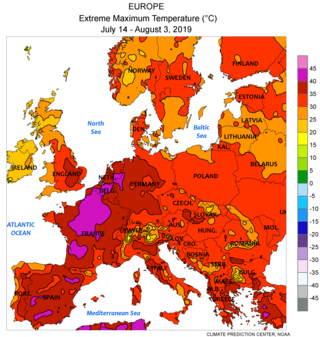
In France, climate change has caused some the greatest annual temperature increases registered in any country in Europe. The 2019 heat wave saw record temperatures of 46.0 °C. Heat waves and other extreme weather events are expected to increase with continued climate change. Other expected environmental impacts include increased floods due to both sea level rise and increased glacier melt. These environmental changes will lead to shifts in ecosystems and affect local organisms. Climate change will also cause economic losses in France, particularly in the agriculture and fisheries sectors.

In Afghanistan, climate change has led to a temperature increase of 1.8 °C since 1950. This has caused far-reaching impacts on Afghanistan, culminating from overlapping interactions of natural disasters, conflict, agricultural dependency, and severe socio-economic hardship.

Climate change in Ghana is impacting the people in Ghana in several ways as the country sits at the intersection of three hydro-climatic zones. Changes in rainfall, weather conditions and sea-level rise will affect the salinity of coastal waters. This is expected to negatively affect both farming and fisheries.

Climate change in Senegal will have wide reaching impacts on many aspects of life in Senegal. Climate change will cause an increase in average temperatures over west Africa by between 1.5 and 4 °C by mid-century, relative to 1986–2005. Projections of rainfall indicate an overall decrease in rainfall and an increase in intense mega-storm events over the Sahel. The sea level is expected to rise faster in West Africa than the global average. Although Senegal is currently not a major contributor to global greenhouse gas emissions, it is one of the countries most vulnerable to climate change.

Climate change and invasive species refers to the process of the environmental destabilization caused by climate change. This environmental change facilitates the spread of invasive species — species that are not historically found in a certain region, and often bring about a negative impact to that region's native species. This complex relationship is notable because climate change and invasive species are also considered by the USDA to be two of the top four causes of global biodiversity loss.

Due to its geographical and natural diversity, Indonesia is one of the countries most susceptible to the impacts of climate change. This is supported by the fact that Jakarta has been listed as the world's most vulnerable city, regarding climate change. It is also a major contributor as of the countries that has contributed most to greenhouse gas emissions due to its high rate of deforestation and reliance on coal power.
Climate change in Guatemala is a serious issue as Guatemala is considered one of 10 nations most vulnerable to the effects of climate change. In 2010, Guatemala "ranked second in the world on the Global Climate Risk Index, which indicates the level of exposure and vulnerability to extreme events." Both commercial agricultural production and subsistence farming have declined, and thus subsistence farmers find it more difficult to find work as day laborers when their own harvests fail. About 300,000 subsistence farmers reported crop loss due to drought in 2018. About half of Guatemala's workforce is in the agricultural sector. Poor crop yields due to climate change have been identified as a factor in migration to the United States.
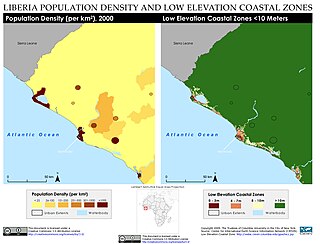
Climate change in Liberia causes many problems as Liberia is particularly vulnerable to climate change. Like many other countries in Africa, Liberia both faces existing environmental issues, as well as sustainable development challenges. Because of its location in Africa, it is vulnerable to extreme weather, the coastal effects of sea level rise, and changing water systems and water availability. Climate change is expected to severely impact the economy of Liberia, especially agriculture, fisheries, and forestry. Liberia has been an active participant in international and local policy changes related to climate change.
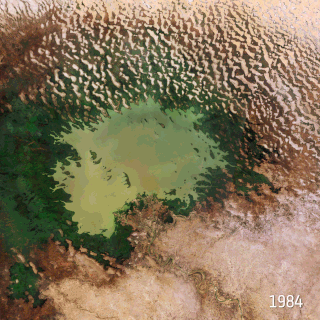
Climate change in Nigeria is evident from temperature increase, rainfall variability. It is also reflected in drought, desertification, rising sea levels, erosion, floods, thunderstorms, bush fires, landslides, land degradation, more frequent, extreme weather conditions and loss of biodiversity. All of which continues to negatively affect human and animal life and also the ecosystems in Nigeria. Although, depending on the location, regions experience climate change with significant higher temperatures during the dry seasons while rainfalls during rainy seasons help keep the temperature at milder levels. The effects of climate change prompted the World Meteorological Organization, in its 40th Executive Council 1988, to establish a new international scientific assessment panel to be called the International Panel on Climate Change (IPCC). The 2007 IPCC's fourth and final Assessment Report (AR4) revealed that there is a considerable threat of climate change that requires urgent global attention. The report further attributed the present global warming to largely anthropogenic practices. The Earth is almost at a point of no return as it faces environmental threats which include atmospheric and marine pollution, global warming, ozone depletion, the dangers of pollution by nuclear and other hazardous substances, and the extinction of various wildlife species.
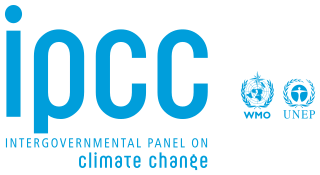
The Sixth Assessment Report (AR6) of the United Nations (UN) Intergovernmental Panel on Climate Change (IPCC) is the sixth in a series of reports which assess the available scientific information on climate change. Three Working Groups covered the following topics: The Physical Science Basis (WGI); Impacts, Adaptation and Vulnerability (WGII); Mitigation of Climate Change (WGIII). Of these, the first study was published in 2021, the second report February 2022, and the third in April 2022. The final synthesis report was finished in March 2023.

















